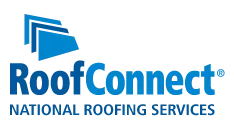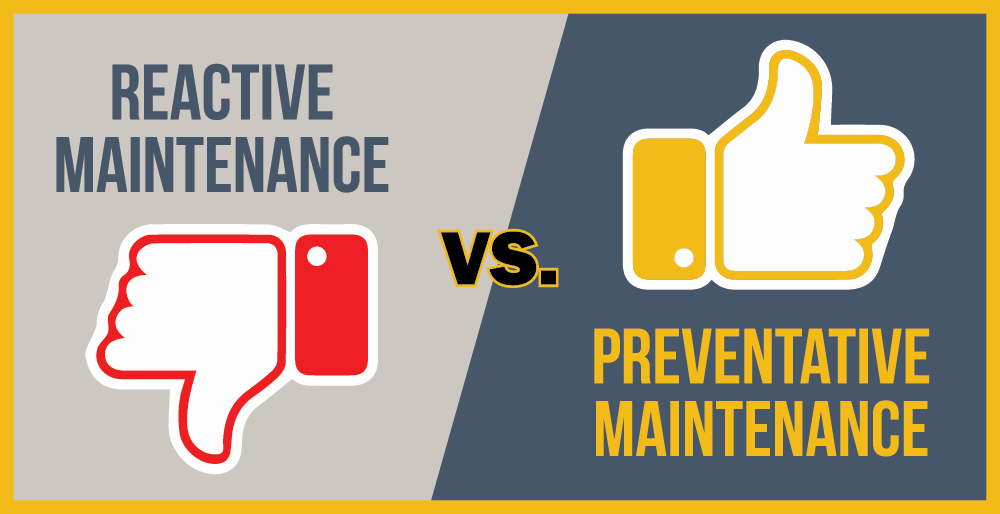Don't Let Reactive Maintenance Cost You Big
The Complete Guide to Preventive vs Reactive Approaches
As a facility manager, you know the juggling act well: keep everything running smoothly while staying within budget. Here’s a fact that might surprise you—your commercial roof represents just 10% of your building’s total cost. Because of this, it’s easy to forget about it once the installation is complete or a repair is finished. Most managers don’t think about their roof again until water starts dripping through the ceiling.
Understanding the fundamental difference between reactive and preventive commercial roof maintenance could be the game-changing decision that transforms your facility management strategy, reduces long-term costs, and protects your organization from costly litigation.
What is Reactive Commercial Roof Maintenance?
Reactive commercial roof maintenance operates on a simple principle: fix problems after they occur. When your roof develops a leak, experiences storm damage, or shows signs of failure, you call for emergency roof repair services. While this approach might seem cost-effective initially, it’s essentially a “run it ’til it breaks” mentality that inevitably leads to higher expenses, unexpected downtime, and increased liability exposure.
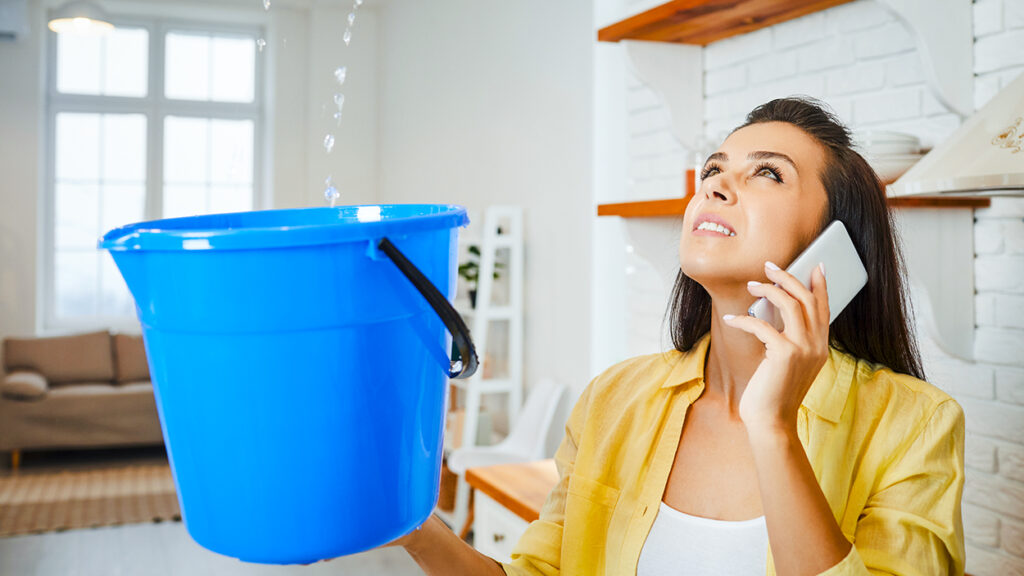
The reactive maintenance cycle typically follows this pattern: equipment or roofing materials deteriorate silently until failure occurs, creating an urgent need for emergency commercial roof repair. This approach leaves facility managers scrambling to find available contractors, often paying premium rates for 24-hour emergency roof repair services during the least convenient times.
The Hidden Costs of Reactive Roof Maintenance
Commercial roofing emergencies don’t just impact your maintenance budget—they create a cascade of expensive consequences. Emergency roof leak repair often costs 3-5 times more than planned maintenance work. When you factor in potential water damage to equipment, inventory loss, business interruption, and temporary relocation costs, reactive maintenance becomes exponentially more expensive than preventive approaches.
Perhaps most concerning is the litigation risk. Construction-related lawsuits involve building exteriors about 80% of the time, with commercial roofing issues accounting for the largest portion of these legal challenges. A staggering 36% of building envelope litigation stems from edge metal failure alone—components that represent just 1% of total building cost yet carry 36% of your legal risk exposure.
What is Preventive Commercial Roof Maintenance?
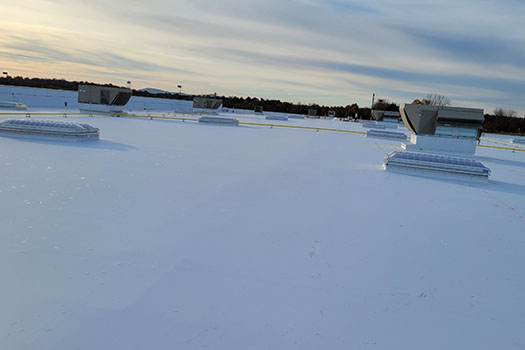
Preventive commercial roof maintenance takes a proactive approach to roof asset management. Rather than waiting for problems to develop, this strategy involves regular inspections, scheduled maintenance, and systematic monitoring to identify and address potential roofing issues before they become costly emergencies. Commercial roof maintenance programs include routine evaluations of roofing materials, drainage systems, flashing, and edge metal components.
A professional roof asset management program combines visual inspections with advanced diagnostic techniques. Modern preventive approaches may include infrared analysis to detect moisture intrusion, drone inspections for comprehensive roof surveys, and predictive maintenance technologies that identify developing problems months before they would typically manifest as leaks or failures.
Preventive vs Reactive Commercial Roofing: A Cost Comparison
The financial benefits of preventive commercial roof maintenance become clear when you examine long-term costs. While reactive maintenance might appear less expensive upfront, the total cost of ownership tells a different story. Preventive maintenance programs typically reduce overall roof-related expenses by 30-50% compared to purely reactive approaches.
Consider a typical scenario: emergency commercial roof repair during a weekend or holiday can cost $200-300 per hour for labor alone, plus premium material costs and potential overtime charges. In contrast, scheduled commercial roof maintenance performed during regular business hours costs significantly less per hour and allows for competitive bidding on materials and services.
Key Components of Effective Commercial Roof Maintenance Programs
Regular Inspection Schedules
Successful roof asset management begins with consistent inspection schedules. Most commercial roofing contractors recommend quarterly inspections, with additional evaluations following severe weather events. These inspections should document drainage performance, membrane condition, flashing integrity, and equipment mounting systems.
Drainage System Maintenance
Proper drainage represents the foundation of commercial roof longevity. Regular cleaning of drains, scuppers, and gutters prevents water accumulation that leads to membrane degradation and structural damage. Preventive drainage maintenance costs a fraction of emergency roof leak repair expenses.
Edge Metal and Flashing Care
Given that edge metal failure accounts for 36% of building envelope litigation, regular attention to perimeter details is crucial. Preventive maintenance programs include systematic inspection and maintenance of edge metal, counterflashing, and penetration seals to prevent the most common sources of roof-related lawsuits.
Emergency Roof Repair vs Planned Maintenance: Service Quality Differences
Emergency commercial roofing situations often compromise repair quality due to time constraints and material availability. Emergency roofers may need to implement temporary solutions that require follow-up work, effectively doubling your costs. Weather conditions during emergency repairs frequently aren’t ideal, potentially affecting long-term repair performance.
Planned commercial roof repair allows contractors to order appropriate materials, schedule work during favorable weather conditions, and perform comprehensive repairs that address root causes rather than just symptoms. This approach typically results in longer-lasting repairs and better warranty coverage.
Implementing Your Commercial Roof Maintenance Plan
Documentation and Record Keeping
Effective commercial roof maintenance requires detailed documentation of all inspections, repairs, and improvements. This documentation proves invaluable for warranty claims, insurance purposes, and legal protection. Digital roof management systems can track maintenance history, store inspection photos, and schedule future service needs.
Contractor Selection Criteria
Choose commercial roofing contractors with proven experience in preventive maintenance programs. Look for companies offering 24-hour emergency roof repair capabilities for unexpected situations while maintaining strong preventive service offerings. National roofing services providers often offer consistency across multiple locations and established quality standards.
Budget Planning and Cost Management
Preventive commercial roof maintenance enables more predictable budgeting compared to reactive approaches. Establishing annual maintenance budgets based on roof age, condition, and expected service life helps facility managers plan more effectively and avoid budget surprises from emergency commercial roof repair needs.
Technology Integration in Modern Roof Maintenance
Advanced roof asset management now incorporates various technologies to enhance preventive capabilities. Infrared thermography detects moisture intrusion that is invisible to visual inspection. Drone technology enables comprehensive roof surveys without safety risks or access limitations. Some commercial roofing companies now offer IoT sensors that monitor roof conditions continuously, alerting facility managers to developing problems before they require emergency roof repair.
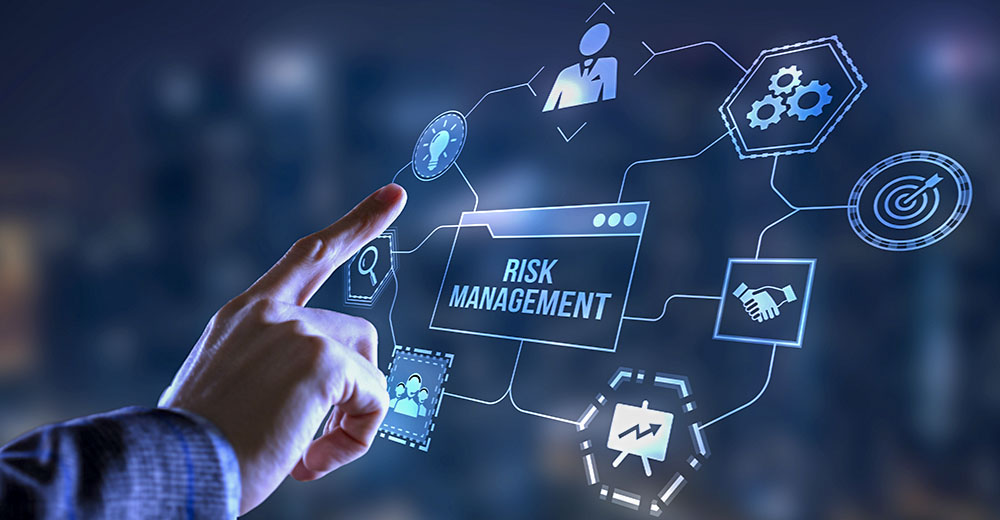
Storm Damage Prevention and Response

While you can’t prevent severe weather, preventive maintenance significantly reduces storm damage vulnerability. Well-maintained roofing systems with properly secured membranes, clear drainage, and intact flashing systems better withstand high winds and heavy precipitation. When storm damage does occur, existing relationships with commercial roofing contractors through preventive maintenance programs often result in faster emergency response and priority scheduling.
The ROI of Commercial Roof Maintenance Programs
Facility managers implementing comprehensive commercial roof maintenance programs typically see a return on investment within 18-24 months. Benefits include extended roof lifespan, reduced emergency repair costs, lower insurance premiums, decreased liability exposure, and improved energy efficiency. Some organizations report 400-500% ROI on preventive maintenance investments when calculated over the roof’s service life.
Legal Protection Through Preventive Maintenance
Regular commercial roof maintenance provides crucial legal protection by demonstrating due diligence in facility management. Documented maintenance records become valuable evidence in litigation defense, showing proactive efforts to maintain safe conditions. This documentation often reduces liability exposure and insurance claims costs.
Implementing Your Commercial Roof Maintenance Plan
A leaky roof is usually expensive to repair and can often lead to lawsuits. Therefore, it is imperative for facility managers to fully understand how a roof leak can affect their business and operations.
Of all construction-related litigation, a building’s exterior usually accounts for around 80%, with roofs accounting for the largest part of these lawsuits. As stated above, out of all litigation regarding the building’s skin, a whopping 36% of these lawsuits stem from the same issue: edge metal failure. Perimeter edge metal makes up only 1% of the building cost, so that 1% is carrying 36% of the exposure to risk of litigation!
Phase 1:
Current Condition Assessment
Begin with comprehensive roof evaluations by qualified commercial roofing contractors. Document existing conditions, identify immediate repair needs, and establish baseline conditions for ongoing monitoring.
Phase 2:
Maintenance Schedule Development
Create detailed maintenance schedules based on roof age, materials, local climate conditions, and usage patterns. Include routine inspections, drainage cleaning, minor repairs, and material renewal activities.
Phase 3:
Contractor Partnership Establishment
Develop a relationship with a reliable commercial roofing company capable of both routine maintenance and emergency commercial roof repair services. Ensure the contractor understands your facilities, has appropriate insurance coverage, and can provide consistent quality across your portfolio.
Partner with RoofConnect for Superior Roof Asset Management
Avoiding unnecessary litigation due to roof leaks can be accomplished by working with a top-tier roofing contractor, like RoofConnect, who can help you create a plan for scheduled preventative maintenance that will catch leaks before they become a lawsuit.
The RoofConnect team has been servicing commercial roofs like yours for almost 20 years now, and our experts are here to help keep your roof well-maintained and leak-free! Our service team is always on call 24/7/365 to take care of all your roofing needs. If you’re interested in learning more about how you can save money with preventative maintenance, connect with us today. Our team is ready to help!
